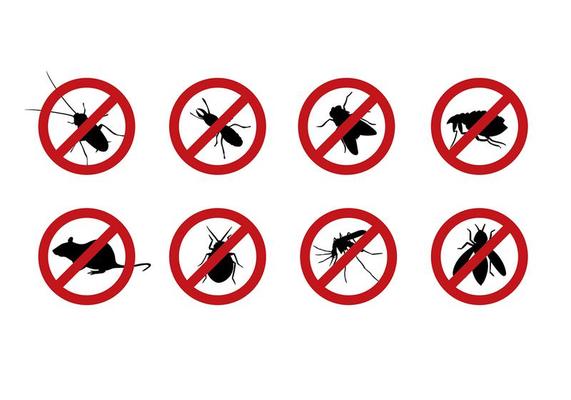A1 Bed Bug Exterminator Charlotte - Effective and Cost Effective Services
Wiki Article
Bed Pest Treatment Break Down: Comparing Chemical Vs. Non-Chemical Solutions
In the world of insect control, especially when dealing with the relentless problem of bed pests, the selection between chemical and non-chemical therapy services can be a critical one. Both strategies provide distinct advantages and disadvantages, affecting factors such as performance, safety factors to consider, and overall price. By checking out the nuanced details of each approach, a more clear understanding of which course to go after in resolving a bed insect problem can be achieved.Effectiveness of Chemical Treatments
Chemical therapies for bed pest problems have actually been widely identified for their rapid and powerful efficacy in eliminating these bugs. When taking into consideration the effectiveness of chemical treatments, it is essential to recognize that they can give a detailed and fast option to a bed pest issue. Professional exterminators frequently depend on pesticides to target bed insects at different stages of their life process, including eggs, grownups, and fairies. These chemicals typically function by interfering with the bed insects' worried system, causing paralysis and ultimate death.In addition, chemical treatments have the advantage of using recurring effects, indicating that they can remain to remove bed insects also after the first application. This residual action is especially beneficial in combating any possible re-infestations. Additionally, the fast action of chemical therapies can bring alleviation to individuals dealing with severe bed bug problems, permitting them to reclaim control of their home rapidly.
Security Worry About Chemical Solutions
One important aspect that calls for cautious factor to consider when making use of chemical services for bed pest treatment is guaranteeing the safety and security of passengers and the environment. Exposure to specific chemicals utilized in bed pest treatments can lead to respiratory system concerns, skin inflammation, or other negative responses, especially in people with pre-existing conditions or level of sensitivities.Furthermore, the ecological influence of chemical services is an additional considerable factor to consider. Some chemicals made use of in bed pest treatments might be hazardous to beneficial bugs, wildlife, and environments if they leach into the soil or water supply. It is vital to use chemical therapies carefully, following security standards, and thinking about much less hazardous alternatives to reduce these dangers and make certain the effective and safe administration of bed insect invasions.
Benefits of Non-Chemical Methods
Taking into consideration the potential safety worries and ecological impact associated with chemical remedies for bed insect treatment, discovering non-chemical techniques presents a promising choice with a number of distinct benefits. Non-chemical therapies are eco pleasant, as they do not contribute to air or water air pollution, making them a lasting option pest control fumigation for parasite control.Furthermore, non-chemical remedies can be effective in targeting bed bugs, consisting of hard-to-reach areas where chemical therapies might not pass through - A1 exterminators charlotte nc. Methods such as warmth therapy, vacuuming, vapor cleansing, and cushion encasements give comprehensive elimination without the usage of unsafe chemicals.
Limitations of Non-Chemical Treatments

In addition, non-chemical treatments typically require multiple applications to accomplish effective obliteration. This can be time-consuming and might not always ensure total removal of all bed bugs and their eggs, particularly in hard-to-reach or surprise places.
In addition, the success of non-chemical treatments heavily counts on proper application and thoroughness, which can be testing for people without professional expertise. Insufficient application of non-chemical techniques might cause insufficient obliteration, resulting in consistent invasions and the requirement for extra treatments.
For that reason, while non-chemical therapies have their benefits, it is necessary to recognize these constraints and consider them when determining one of the most efficient strategy for managing bed insect invasions.
Expense Comparison: Chemical Vs. Non-Chemical Options
Provided the restrictions connected with non-chemical therapies, an essential facet to review in the context of bed pest management is the cost contrast in between chemical and non-chemical choices. Chemical treatments normally include the application of pesticides by professionals, which can vary from $250 to $900 per room, depending upon the extent of the invasion and the size of the location to be dealt with. In contrast, non-chemical treatments like warm treatment or steam basics can be a lot more expensive, with costs varying from $1,000 to $6,000 for a whole home. While the initial cost of chemical therapies may appear lower, several treatments might be called for to completely remove the invasion, potentially raising the total expense. On the other hand, non-chemical choices may provide an extra lasting and environment-friendly option, although they can be cost-prohibitive for some individuals. Inevitably, when thinking about the cost of bed pest treatment options, it is very important to weigh the in advance expenses versus the efficiency and lasting sustainability of the chosen technique.Conclusion

Thinking about the possible safety issues and ecological impact associated with chemical remedies for bed insect therapy, discovering non-chemical approaches provides an appealing alternative with a number of distinct benefits.Offered the restrictions linked with non-chemical therapies, an important facet to evaluate in the context of bed bug administration is the cost comparison between chemical and non-chemical choices. In contrast, non-chemical treatments like warm therapy or steam can be more costly, with prices varying from $1,000 to $6,000 for an entire home. While the preliminary price of chemical therapies might appear reduced, several treatments may be required to totally eliminate the infestation, possibly raising the general price.In verdict, when contrasting chemical and non-chemical bed insect therapy options, it is important to take into consideration effectiveness, safety and security, benefits, restrictions, and price.
Report this wiki page